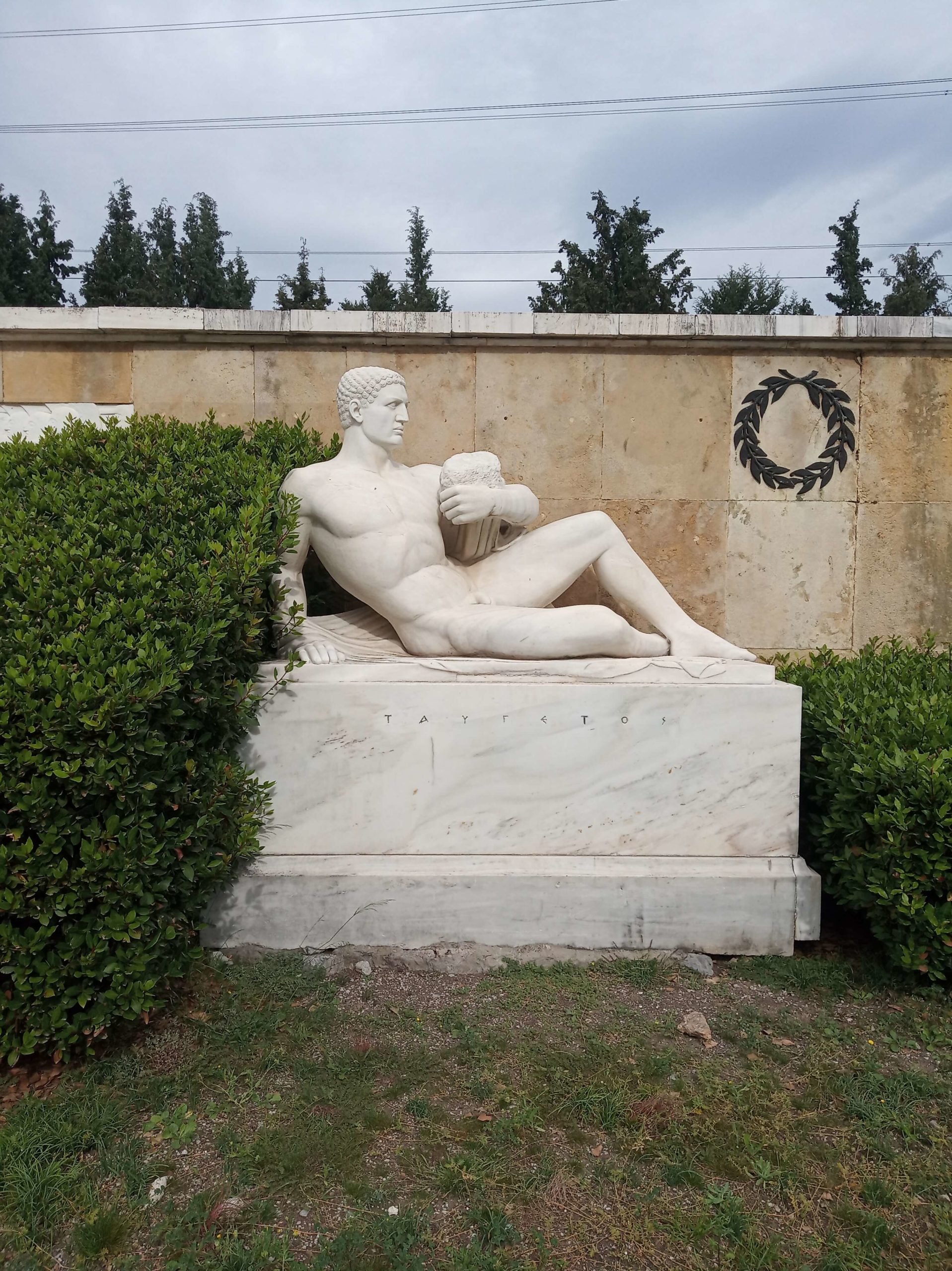The inscription on the Leonidas statue holds the key to uncovering the story of this ancient hero. Several Linear B tablets and inscriptions dating to different periods provide evidence of cultic officials as key-holders, shedding light on their role and social background. The iconographic material on temple keys and key-holders further supports the importance of this symbol. The inscription on the statue may offer insight into the appointment process and tasks of key-holders, as well as their connection to the goddess Hecate and her festival of the key.
Key Takeaways:
- The inscription on the Leonidas statue reveals valuable information about an ancient hero.
- Linear B tablets and inscriptions provide evidence of key-holders and their significance in ancient Greece.
- The symbol of the temple key and its association with the goddess Hecate play a crucial role in understanding key-holder roles.
- The inscription may offer insights into the appointment process and tasks of key-holders.
- The festival of the key, dedicated to Hecate, is an important aspect of Greek religious life.
The Importance of Key-Holders in Greek Sanctuaries
In Greek sanctuaries, key-holders played a crucial role in the religious practices of the ancient Greeks. These individuals, often female priests, held the temple key as an insignia of their office. The appointment process, tasks, and social background of key-holders are well-documented in epigraphic sources, providing valuable insights into the significance of their role.
Epigraphic evidence reveals the connection between key-holders and the goddess Hecate, the divine key-holder. This association is a recurring theme in various inscriptions and iconographic depictions. Key-holders were entrusted with the responsibility of safeguarding the sacred spaces and controlling access to them. They were seen as intermediaries between the mortal world and the divine realm, symbolizing the link between worshippers and the sanctuary.
The festival of the key, which celebrated Hecate, further emphasized the importance of key-holders in Greek sanctuaries. This annual event honored the goddess as the guardian of doors and entrances, and key-holders played a central role in its rituals. The festival provided an opportunity for worshippers to express their gratitude and seek blessings from Hecate through the key-holders.
Table: Roles and Responsibilities of Key-Holders in Greek Sanctuaries
| Role | Responsibilities |
|---|---|
| Guardians of the Temple | Ensure the sanctity and security of the sacred spaces |
| Controllers of Access | Regulate entry and exit from the sanctuary, safeguarding the divine realm |
| Intermediaries | Bridge the gap between mortals and the gods, facilitating communication and worship |
Through their roles as key-holders, these individuals held a position of authority and were essential to the functioning of Greek sanctuaries. Their connection to the goddess Hecate and the symbolic meaning of the temple key elevated their status and underscored their significance in the religious life of ancient Greece.
The Symbolism of the Temple Key
The temple key held by key-holders in Greek sanctuaries was more than just a physical object. It carried deep symbolism and represented the authority and responsibility of these individuals. The presence of the temple key in grave stelai and vase paintings further highlights its iconographic significance. The key symbolized the connection between mortals and the divine, serving as a link between the sanctuary and the worshippers. It also represented the power and protection associated with the goddess Hecate, who controlled access to sacred spaces.
The temple key stood as a tangible representation of the key-holders’ divine authority and their role as protectors of sacred spaces. It was not only a tool to unlock physical doors but also a metaphorical key that unlocked the spiritual connection between worshippers and the gods. Just as the key opened the doors of the sanctuary, it opened the doors of communication and access to the divine realm.
The symbolism of the temple key extended beyond its association with the goddess Hecate. It also represented the ideas of power and protection. In ancient Greek society, keys were often associated with authority and control. The possession of the temple key elevated key-holders to positions of importance within the sanctuary, as they were entrusted with the responsibility of safeguarding the sacred space and ensuring its rituals were conducted properly.
Furthermore, the key symbolized protection. The ability to control access to the sanctuary meant that key-holders had the power to grant or deny entry to worshippers. By doing so, they ensured the sanctity of the space and protected it from any potential harm or desecration. The key, therefore, became a symbol of security and the divine protection that was bestowed upon those who were deemed worthy of entering the sacred grounds.
The Symbolism of the Temple Key
| Symbol | Meaning |
|---|---|
| Connection | Symbolized the link between mortals and the divine |
| Authority | Represented the power and responsibility of the key-holders |
| Protection | Signified the safeguarding of the sacred space |
Conclusion
The Leonidas statue inscription has revealed fascinating insights into the role of key-holders and their connection to the goddess Hecate in Greek sanctuaries. This ancient hero, whose story was hidden within the inscription, sheds light on the significance of these individuals in the religious life of ancient Greece.
Through the deciphering of the inscription, we have learned that key-holders were essential figures in Greek sanctuaries, often female priests entrusted with the temple key as a symbol of their office. The appointment process, tasks, and social background of these key-holders have been well-documented in epigraphic sources, emphasizing their importance in religious rituals and ceremonies.
Furthermore, the symbolism of the temple key itself cannot be overlooked. It not only represented the authority and power of the key-holders but also served as a link between mortals and the divine. This connection was exemplified by the association of key-holders with the goddess Hecate, the divine key-holder herself, who controlled access to sacred spaces.
By unlocking the secrets of the Leonidas statue inscription, we have gained a deeper understanding of the cultural significance of the temple key and the role of key-holders in Greek sanctuaries. The rituals and iconography surrounding the festival of the key have further reinforced their importance in the religious practices of ancient Greece. The inscription has allowed us to uncover a hidden chapter in history and appreciate the legacy of these ancient heroes.
FAQ
What is the significance of the Leonidas statue inscription?
The inscription on the Leonidas statue holds the key to uncovering the story of this ancient hero. It may offer insight into the appointment process and tasks of key-holders, as well as their connection to the goddess Hecate and her festival of the key.
Who were the key-holders in Greek sanctuaries?
Key-holders were individuals, often female priests, who played a crucial role in Greek sanctuaries. They held the temple key as an insignia of their office and were responsible for the security and access to sacred spaces.
What was the connection between key-holders and the goddess Hecate?
The goddess Hecate, known as the divine key-holder, was closely associated with key-holders in Greek sanctuaries. They shared a connection and were often involved in rituals and celebrations honoring Hecate and her role as the guardian of doors and entrances.
What did the temple key symbolize in Greek sanctuaries?
The temple key held by key-holders in Greek sanctuaries carried deep symbolism. It represented the authority and responsibility of these individuals, as well as the power and protection associated with the goddess Hecate. The key symbolized the link between mortals and the divine, serving as a connection between the sanctuary and the worshippers.
Source Links
Author Profile
-
Welcome to e-thermopyles.gr, your gateway to the fascinating world of Thermopylae and the legendary Spartans. My name is George Margaritis, and I’m the proud owner and writer behind this website.
A Passion for History and the Spartan Legacy
I consider myself fortunate to call the historic site of Thermopylae my home. From a young age, I was captivated by history, and in particular, the incredible tale of the Battle of Leonidas in Thermopylae. The valiant stand of King Leonidas and his 300 Spartans against overwhelming odds has left an indelible mark on the annals of history.
As I delved deeper into this captivating story, my fascination only grew. The bravery, strategy, and sacrifice of those Spartan warriors resonated with me, and I wanted to share this rich history with the world. That’s why I created e-thermopyles.gr, a platform dedicated to exploring and uncovering the depths of knowledge surrounding Thermopylae and the Spartans.
Latest entries
 HistoryOctober 31, 2023Exploring Why is the Battle of Thermopylae Interesting
HistoryOctober 31, 2023Exploring Why is the Battle of Thermopylae Interesting GuidesOctober 31, 2023Your Guide to the Athens to Thermopylae Train Journey
GuidesOctober 31, 2023Your Guide to the Athens to Thermopylae Train Journey GuidesOctober 31, 2023Uncover the Mystery: Where is Thermopylae Today?
GuidesOctober 31, 2023Uncover the Mystery: Where is Thermopylae Today? GuidesOctober 31, 2023Uncover History by Visiting Thermopylae – A Travel Guide
GuidesOctober 31, 2023Uncover History by Visiting Thermopylae – A Travel Guide






